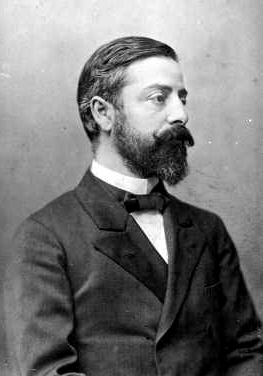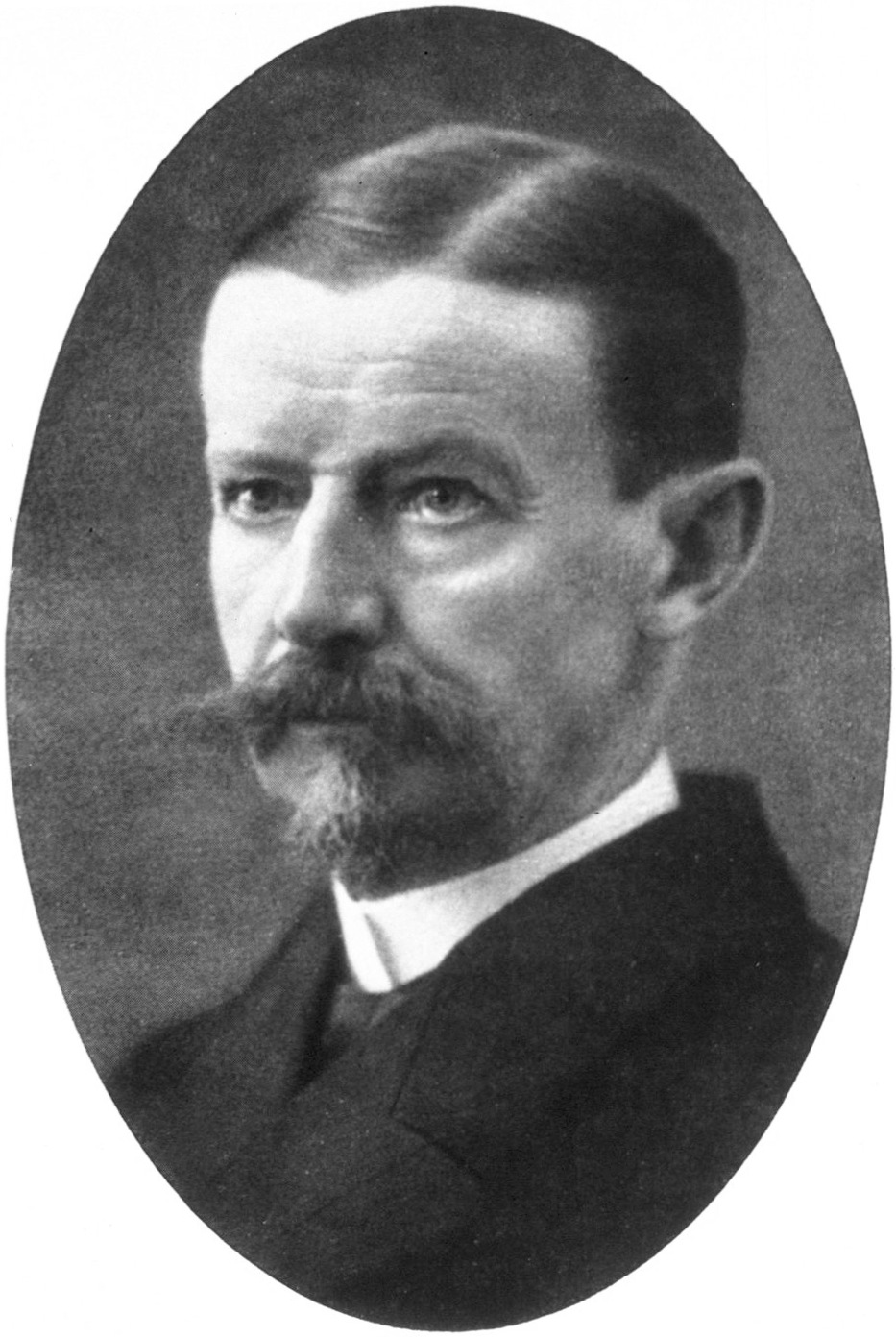|
Zuckerkandl's Tubercle (thyroid Gland)
Zuckerkandl's tubercle is a pyramidal extension of the thyroid gland, present at the most posterior side of each lobe. Emil Zuckerkandl described it in 1902 as the ''processus posterior glandulae thyreoideae''.Zuckerkandl, E. (1902). Die Epithelkörperchen von Didelphys azara nebst Bemerkungen über die Epithelkörperchen des Menschen. ''Anatomische Hefte, 19''(1), 59-84. Although the structure is named after Zuckerkandl, it was discovered first by Otto Madelung in 1867 as the ''posterior horn of the thyroid''. The structure is important in thyroid surgery as it is closely related to the recurrent laryngeal nerve, the inferior thyroid artery The inferior thyroid artery is an artery in the neck. It arises from the thyrocervical trunk and passes upward, in front of the vertebral artery and longus colli muscle. It then turns medially behind the carotid sheath and its contents, and als ..., Berry's ligament and the parathyroid glands. The structure is subject to an important a ... [...More Info...] [...Related Items...] OR: [Wikipedia] [Google] [Baidu] |
Thyroid Gland
The thyroid, or thyroid gland, is an endocrine gland in vertebrates. In humans it is in the neck and consists of two connected lobes. The lower two thirds of the lobes are connected by a thin band of tissue called the thyroid isthmus. The thyroid is located at the front of the neck, below the Adam's apple. Microscopically, the functional unit of the thyroid gland is the spherical thyroid follicle, lined with follicular cells (thyrocytes), and occasional parafollicular cells that surround a lumen containing colloid. The thyroid gland secretes three hormones: the two thyroid hormones triiodothyronine (T3) and thyroxine (T4)and a peptide hormone, calcitonin. The thyroid hormones influence the metabolic rate and protein synthesis, and in children, growth and development. Calcitonin plays a role in calcium homeostasis. Secretion of the two thyroid hormones is regulated by thyroid-stimulating hormone (TSH), which is secreted from the anterior pituitary gland. TSH is regulated ... [...More Info...] [...Related Items...] OR: [Wikipedia] [Google] [Baidu] |
Emil Zuckerkandl
Emil Zuckerkandl (1 September 1849 in Győr, Hungary – 28 May 1910 in Vienna, Austria) was a Hungarian anatomist. Biography Zuckerkandl was born in Győr on 1 September 1849, to a Jewish family. He had two brothers: the industrialist Victor Zuckerkandl, and the urologist Otto Zuckerkandl (1861–1921). He was educated at the University of Vienna ( MD, 1874) and was an admiring student of Josef Hyrtl, and an anatomical assistant to Karl von Rokitansky (1804–1878) and Karl Langer (1819–1887). In 1875, he became privatdozent of anatomy at the University of Utrecht, and he was appointed assistant professor at the University of Vienna in 1879, being made professor at Graz in 1882. Beginning in 1888, he was a professor of descriptive and topographical anatomy at the University of Vienna. He conducted research in almost all fields of morphology, making contributions to the normal and pathological anatomy of the nasal cavity, the anatomy of the facial skeleton, bloo ... [...More Info...] [...Related Items...] OR: [Wikipedia] [Google] [Baidu] |
Otto Madelung
Otto Wilhelm Madelung (May 15, 1846 – July 22, 1926) was a German surgeon who was a native of Gotha. His son, physicist Erwin Madelung (1881–1972), discovered the Madelung constant. Academic career Madelung was born in Gotha. In 1869 he received his medical doctorate from the University of Tübingen, afterwards being assigned to a military hospital during the Franco-Prussian War. He later served as a surgical assistant in Bonn, and in 1873–74 worked as an assistant at the pathological clinic of Georg Eduard von Rindfleisch (1836–1908). In 1874 he visited Great Britain and the United States. In 1881 he became an assistant professor of surgery at the University of Bonn, followed by professorships at Rostock (from 1882) and Strasbourg (from 1894). After the French takeover of Strasbourg following World War I, Madelung was relieved of his duties, and he subsequently retired to Göttingen, where he died. Contributions in medicine Otto Madelung is remembered for his ... [...More Info...] [...Related Items...] OR: [Wikipedia] [Google] [Baidu] |
Recurrent Laryngeal Nerve
The recurrent laryngeal nerve (RLN) is a branch of the vagus nerve ( cranial nerve X) that supplies all the intrinsic muscles of the larynx, with the exception of the cricothyroid muscles. There are two recurrent laryngeal nerves, right and left. The right and left nerves are not symmetrical, with the left nerve looping under the aortic arch, and the right nerve looping under the right subclavian artery then traveling upwards. They both travel alongside the trachea. Additionally, the nerves are among the few nerves that follow a ''recurrent'' course, moving in the opposite direction to the nerve they branch from, a fact from which they gain their name. The recurrent laryngeal nerves supply sensation to the larynx below the vocal cords, give cardiac branches to the deep cardiac plexus, and branch to the trachea, esophagus and the inferior constrictor muscles. The posterior cricoarytenoid muscles, the only muscles that can open the vocal folds, are innervated by this nerve. ... [...More Info...] [...Related Items...] OR: [Wikipedia] [Google] [Baidu] |
Inferior Thyroid Artery
The inferior thyroid artery is an artery in the neck. It arises from the thyrocervical trunk and passes upward, in front of the vertebral artery and longus colli muscle. It then turns medially behind the carotid sheath and its contents, and also behind the sympathetic trunk, the middle cervical ganglion resting upon the vessel. Reaching the lower border of the thyroid gland it divides into two branches, which supply the postero-inferior parts of the gland, and anastomose with the superior thyroid artery, and with the corresponding artery of the opposite side. Structure The branches of the inferior thyroid artery are the inferior laryngeal, the oesophageal, the tracheal, the ascending cervical and the pharyngeal arteries. The inferior laryngeal artery climbs the trachea to the back part of the larynx under cover of the inferior pharyngeal constrictor muscle. It is accompanied by the recurrent nerve, and supplies the muscles and mucous membrane of this part, anastomosing with ... [...More Info...] [...Related Items...] OR: [Wikipedia] [Google] [Baidu] |
Suspensory Ligament Of Thyroid
The suspensory ligament of the thyroid gland, or Berry's ligament, is a suspensory ligament A suspensory ligament is a ligament that supports a body part, especially an organ. Types include: * Suspensory ligament of axilla, also known as Gerdy's ligament * Cooper's ligaments, also known as the suspensory ligaments of Cooper or Suspensor ... that passes from the thyroid gland to the trachea. Both the trachea and the thyroid are surrounded by a thin layer of fascia, which is separate from the thyroid capsule.Sabiston Texbook of Surgery 20th ed. Posteriorly, this investing fascia fuses with the thyroid capsule, forming a thick suspensory ligament for the thyroid gland known as the ligament of Berry. The ligaments are attached chiefly to the cricoid cartilage, and may extend to the thyroid cartilage. The thyroid gland and all thyroid swelling move with the swallowing/deglutition because the thyroid is attached to the cartilage of the larynx by the suspensory ligament of Berry. Li ... [...More Info...] [...Related Items...] OR: [Wikipedia] [Google] [Baidu] |
Parathyroid Glands
Parathyroid glands are small endocrine glands in the neck of humans and other tetrapods. Humans usually have four parathyroid glands, located on the back of the thyroid gland in variable locations. The parathyroid gland produces and secretes parathyroid hormone in response to a low blood calcium, which plays a key role in regulating the amount of calcium in the blood and within the bones. Parathyroid glands share a similar blood supply, venous drainage, and lymphatic drainage to the thyroid glands. Parathyroid glands are derived from the epithelial lining of the third and fourth pharyngeal pouches, with the superior glands arising from the fourth pouch and the inferior glands arising from the higher third pouch. The relative position of the inferior and superior glands, which are named according to their final location, changes because of the migration of embryological tissues. Hyperparathyroidism and hypoparathyroidism, characterized by alterations in the blood calcium levels ... [...More Info...] [...Related Items...] OR: [Wikipedia] [Google] [Baidu] |
Glands
In animals, a gland is a group of cells in an animal's body that synthesizes substances (such as hormones) for release into the bloodstream (endocrine gland) or into cavities inside the body or its outer surface (exocrine gland). Structure Development Every gland is formed by an ingrowth from an epithelial surface. This ingrowth may in the beginning possess a tubular structure, but in other instances glands may start as a solid column of cells which subsequently becomes tubulated. As growth proceeds, the column of cells may split or give off offshoots, in which case a compound gland is formed. In many glands, the number of branches is limited, in others (salivary, pancreas) a very large structure is finally formed by repeated growth and sub-division. As a rule, the branches do not unite with one another, but in one instance, the liver, this does occur when a reticulated compound gland is produced. In compound glands the more typical or secretory epithelium is found forming ... [...More Info...] [...Related Items...] OR: [Wikipedia] [Google] [Baidu] |
Endocrine System
The endocrine system is a messenger system comprising feedback loops of the hormones released by internal glands of an organism directly into the circulatory system, regulating distant target organs. In vertebrates, the hypothalamus is the neural control center for all endocrine systems. In humans, the major endocrine glands are the thyroid gland and the adrenal glands. The study of the endocrine system and its disorders is known as endocrinology. Glands that signal each other in sequence are often referred to as an axis, such as the hypothalamic-pituitary-adrenal axis. In addition to the specialized endocrine organs mentioned above, many other organs that are part of other body systems have secondary endocrine functions, including bone, kidneys, liver, heart and gonads. For example, the kidney secretes the endocrine hormone erythropoietin. Hormones can be amino acid complexes, steroids, eicosanoids, leukotrienes, or prostaglandins. The endocrine system can be contrasted ... [...More Info...] [...Related Items...] OR: [Wikipedia] [Google] [Baidu] |
Human Head And Neck
Humans (''Homo sapiens'') are the most abundant and widespread species of primate, characterized by bipedalism and exceptional cognitive skills due to a large and complex brain. This has enabled the development of advanced tools, culture, and language. Humans are highly social and tend to live in complex social structures composed of many cooperating and competing groups, from families and kinship networks to political states. Social interactions between humans have established a wide variety of values, social norms, and rituals, which bolster human society. Its intelligence and its desire to understand and influence the environment and to explain and manipulate phenomena have motivated humanity's development of science, philosophy, mythology, religion, and other fields of study. Although some scientists equate the term ''humans'' with all members of the genus ''Homo'', in common usage, it generally refers to ''Homo sapiens'', the only extant member. Anatomically m ... [...More Info...] [...Related Items...] OR: [Wikipedia] [Google] [Baidu] |
Thyroid
The thyroid, or thyroid gland, is an endocrine gland in vertebrates. In humans it is in the neck and consists of two connected lobes. The lower two thirds of the lobes are connected by a thin band of tissue called the thyroid isthmus. The thyroid is located at the front of the neck, below the Adam's apple. Microscopically, the functional unit of the thyroid gland is the spherical thyroid follicle, lined with follicular cells (thyrocytes), and occasional parafollicular cells that surround a lumen containing colloid. The thyroid gland secretes three hormones: the two thyroid hormones triiodothyronine (T3) and thyroxine (T4)and a peptide hormone, calcitonin. The thyroid hormones influence the metabolic rate and protein synthesis, and in children, growth and development. Calcitonin plays a role in calcium homeostasis. Secretion of the two thyroid hormones is regulated by thyroid-stimulating hormone (TSH), which is secreted from the anterior pituitary gland. TSH is regula ... [...More Info...] [...Related Items...] OR: [Wikipedia] [Google] [Baidu] |







